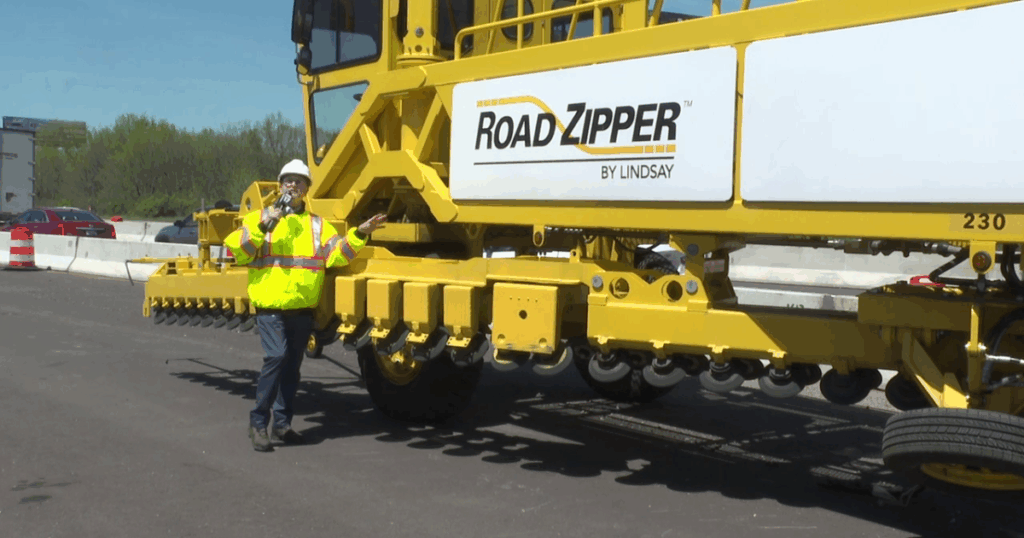Introduction to the Road Zipper
The Road Zipper represents a remarkable innovation in traffic management technology. This heavy-duty machine, often referred to as a “metal monster,” redefines how highways operate. By effectively managing lane configurations during road construction or peak traffic times, the Road Zipper offers a solution that enhances both safety and efficiency.
How the Road Zipper Works
The functionality of the Road Zipper lies in its ability to shift and adjust concrete barriers on roadways seamlessly. Utilizing a sophisticated hydraulic system, this gadget can modify road layouts in real-time. As traffic patterns change throughout the day, the machine can create additional lanes where needed, alleviating congestion and improving overall flow.
Benefits of Using the Road Zipper
One of the most significant advantages of the Road Zipper is its potential to enhance safety. By keeping traffic properly aligned and clearly separated from construction zones, the risk of accidents diminishes greatly. Furthermore, it optimizes road space, allowing for more vehicles to travel smoothly, which decreases travel time and frustration for commuters.
The Environmental Impact
In addition to improving traffic flow, the Road Zipper also contributes positively to environmental sustainability. By reducing idling times in traffic, the gadget helps lower greenhouse gas emissions. This is a critical factor as cities strive to become more eco-friendly while maintaining robust transportation systems.
Challenges and Considerations
Despite its numerous advantages, there are challenges associated with the Road Zipper. The initial investment in this technology can be substantial, and not all municipalities may have the budget to implement it. Additionally, proper training for operators is essential to ensure that the Road Zipper is used effectively and safely.
Real-World Applications
Various cities across the United States have started to implement the Road Zipper in their traffic management strategies. Its success in urban areas has prompted discussions about expanding its use in other regions. As more cities adapt to modern transportation challenges, the Road Zipper may become a staple in highway infrastructure nationwide.
Conclusion: A Future with the Road Zipper
The Road Zipper symbolizes a step forward in roadway innovation. As communities continue adapting to increasing traffic demands, integrating technology like the Road Zipper can lead to safer, more efficient travel. Whether viewed as a metal monster or a gargantuan gadget, there’s no denying that the Road Zipper holds significant promise for the future of road construction and traffic management.
Revolutionizing Traffic Management: The Road Zipper Technology
What is a Road Zipper?
The road zipper is an innovative traffic management solution designed to enhance road safety and efficiency. It consists of movable barriers that adjust the width of traffic lanes depending on real-time conditions. This technology addresses congestion issues and aims to improve the flow of vehicles on busy roads.
Benefits of Road Zipper Technology
One of the primary benefits of the road zipper is its ability to adapt lane configurations quickly. During peak hours, it can narrow lanes to accommodate more vehicles, reducing travel times. Additionally, road zippers improve safety by providing physical separation between opposing lanes, thereby minimizing the risk of head-on collisions.
How Does It Work?
The operation of the road zipper involves hydraulic mechanisms that move the barriers efficiently. Road crews can deploy or retract these barriers within minutes, allowing for quick adaptations to traffic flow. The system is often controlled through a central traffic management system, ensuring seamless operation during various traffic conditions.
Applications of Road Zipper Technology
This revolutionary technology has been implemented in various traffic scenarios, from busy urban centers to major highways. Its versatility allows it to address unique roadway challenges. Some regions have reported significant decreases in traffic congestion and improved incident response times since adopting road zipper systems.
Environmental Impact
The road zipper not only benefits traffic flow but also has a positive environmental impact. By reducing congestion, it subsequently lowers vehicle emissions and fuel consumption. This aligns with global efforts to promote sustainable transportation practices and reduce our carbon footprint.
The Future of Traffic Management
As cities continue to expand and traffic volumes increase, the need for innovative solutions like the road zipper becomes more critical. Ongoing research and development aim to integrate smart technologies, such as real-time data analytics and adaptive traffic signals, to create even more responsive traffic management systems that further enhance the effectiveness of road zippers.
Conclusion
The road zipper stands as a testament to modern engineering aimed at solving age-old problems in traffic management. Its capacity to improve safety, efficiency, and environmental sustainability makes it a promising solution for the future of roadway design. As more regions consider its implementation, the road zipper could become a standard feature in urban planning and highway maintenance.


